At Repromed, we are incredibly proud of our pregnancy success rates. We hope our demonstrated success in fertility might lead you to choose us as your trusted fertility provider.
We are passionate about helping patients achieve their dream of having a family. It is a responsibility we take very seriously. We believe in empowering you with relevant information so you can make the best decisions for your individual circumstances.
That’s why we believe in complete transparency when it comes to publishing our pregnancy success rates.
Understanding Success Rates
We understand that interpreting success rates and comparing fertility clinics can be challenging, as different providers often present their success rates in very different ways. It’s important to us that you’re able to make an informed decision when choosing a fertility provider. You can access independent guidance and information on how to interpret success rates by clicking here.
Continuously Improving
We are continually striving to improve our success rates and outcomes for our patients. Read about the initiatives we are working on to improve our success rates here.
Your Journey
Many factors can contribute to your likelihood of achieving a pregnancy or live birth. Maternal age is the single most important consideration, but the cause of infertility and lifestyle factors such as weight and smoking also play a part.
We recommend that everyone should have a consultation with a fertility doctor to understand their individual chances of success. A fertility doctor will review your personal medical history, conduct fertility health assessments, and discuss your individual chances of success with you.
It’s important to realise that not every treatment cycle will result in an egg collection, an embryo transfer or having embryos to freeze. We do everything we possibly can to give you the very best chance of successfully conceiving, but unfortunately there are no guarantees when it comes to fertility treatment.
Simply put, your chance of success is very specific to your clinical situation. A fertility doctor can provide you with personalised guidance and fertility advice. You can book a consultation with a Repromed fertility doctor here.
YourIVFSuccess Rates Results
The first measure looks at what percentage of completed egg retrieval cycles result in a live birth. Put simply, it tells you how likely you are to have a baby from each egg pickup. To maintain this measure at a level far above the national average, Repromed works with the best clinicians in the country to plan your cycle and uses the latest technology to give every embryo the best chance of becoming a healthy baby.
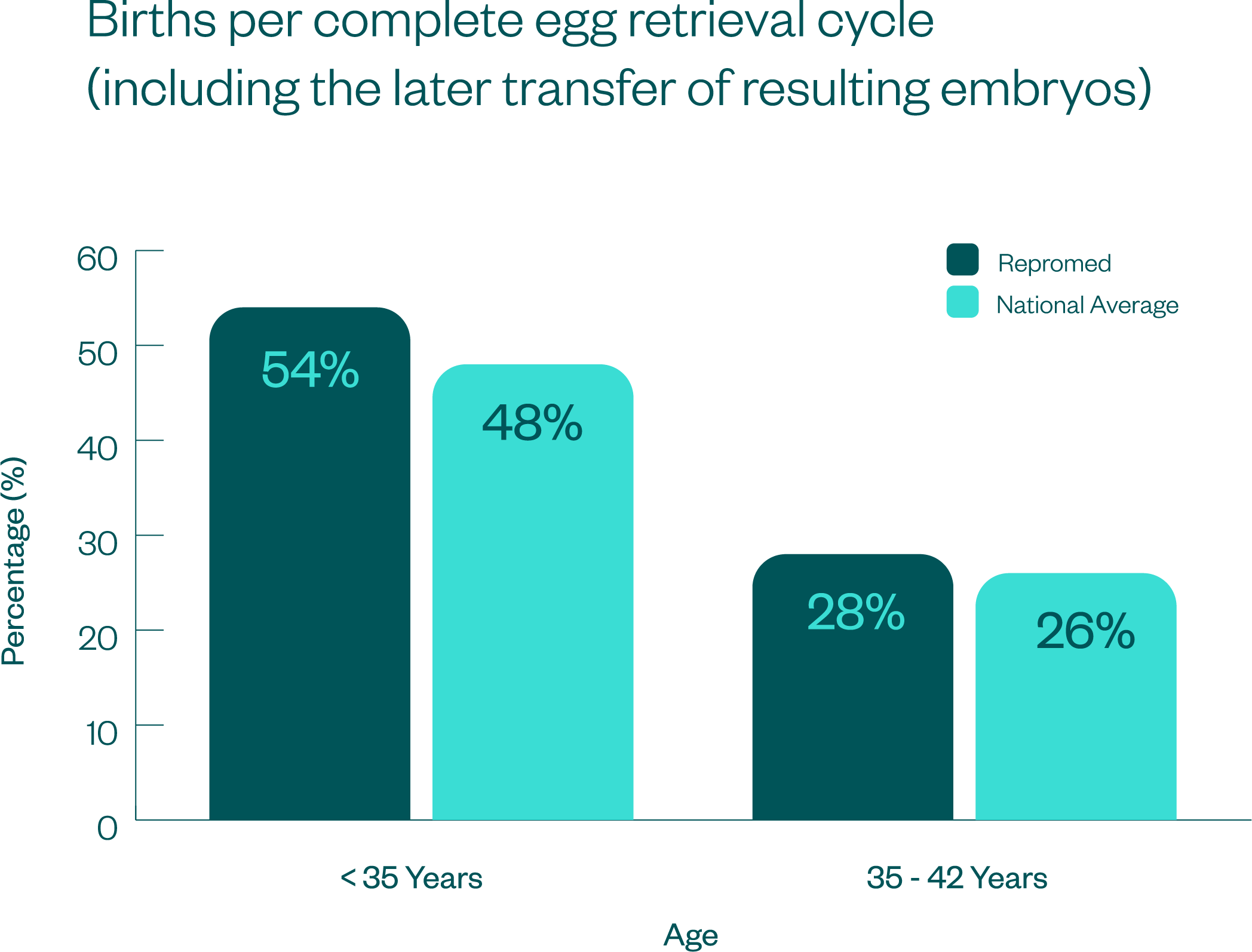
Every year, clinic data is independently audited by the National Perinatal and Epidemiology and Statistics Unit (NPESU) and provided to IVF clinics upon request. The team at Repromed have used this data to create a combined total of the Repromed Adelaide and Repromed Darwin clinics for this measure.
Measure 1 covers live births from embryo transfers which were initiated in 2021 and 2022, divided by the number of egg collections in 2021. This measure only includes patients who used their own eggs and doesn’t include egg or embryo freeze cycles. If you are interested in using donated eggs in your cycle, please contact Repromed to better understand your chances of success.
The second measure we’re looking at is the same as the first – except that it only looks at patients who are undergoing their first ever egg collection. If you’re a first-time patient, this figure gives you a good idea of how likely you are to bring home a baby on your first cycle. You may be wondering: why is this measure higher than measure 1? The answer is that a significant number of first-time patients bring home a healthy baby after only one egg retrieval! This fact boosts this measure, making it higher than measure 1.
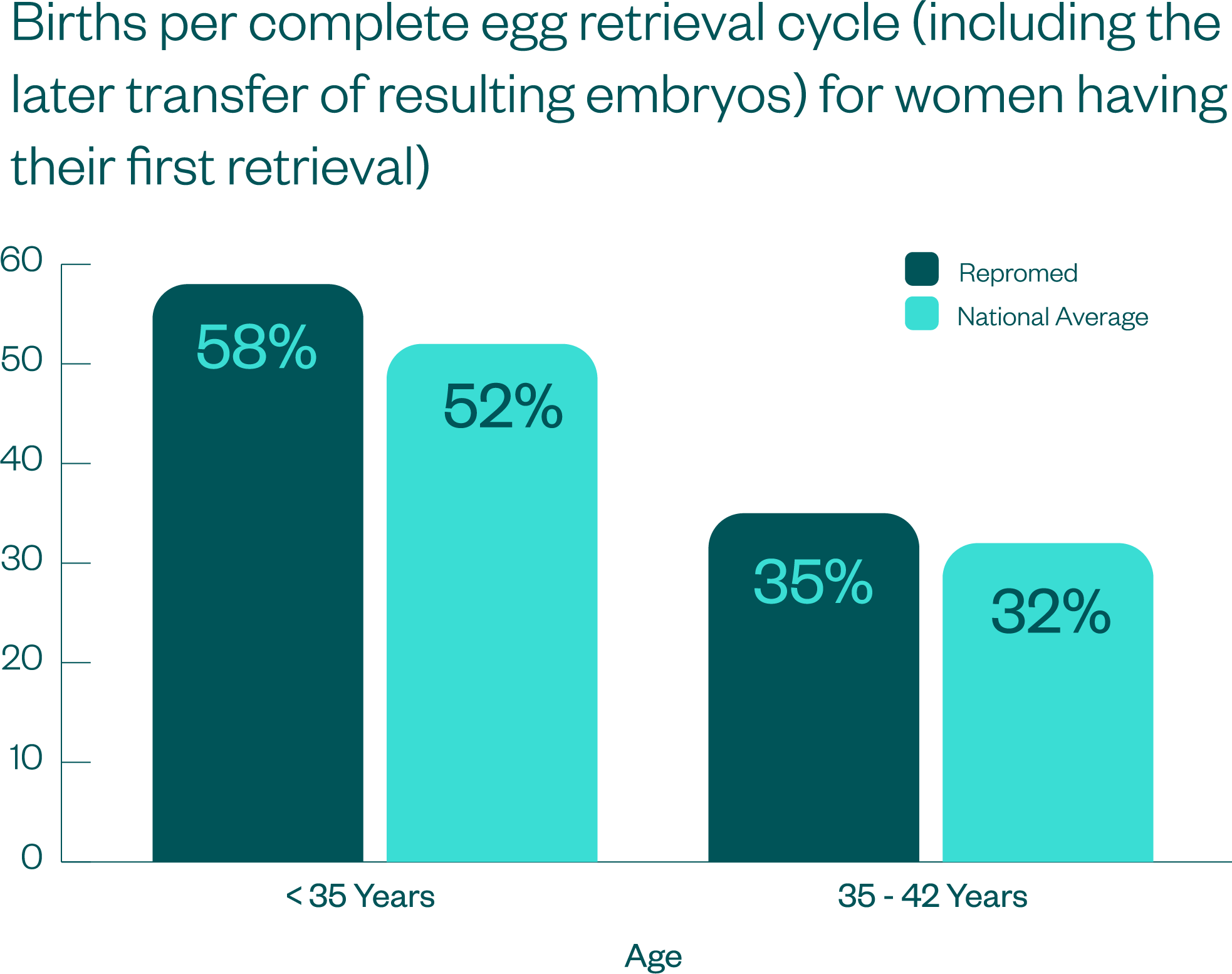
Every year, clinic data is independently audited by the National Perinatal and Epidemiology and Statistics Unit (NPESU) and provided to IVF clinics upon request. The team at Repromed have used this data to create a combined total of the Repromed Adelaide and Repromed Darwin clinics for this measure.
Measure 2 covers live births from embryo transfers which were initiated in 2021 and 2022, divided by the total number of egg collections in 2021. This measure only includes patients who have never previously had an IVF cycle in Australia. It also only includes patients who use their own eggs and doesn’t include egg or embryo freeze cycles. If you are interested in using donated eggs in your cycle, please contact Repromed to better understand your chances of success.
This measure is a bit different to the previous two – it looks at how likely an intended embryo transfer is to result in a live birth. Most egg collections at Repromed result in more than one healthy, usable embryos. Because of this, most of our patients will have the option to undergo multiple embryo transfer cycles, per egg collection. Measure 3 tells us how likely each of these embryo transfers is to result in a live birth.
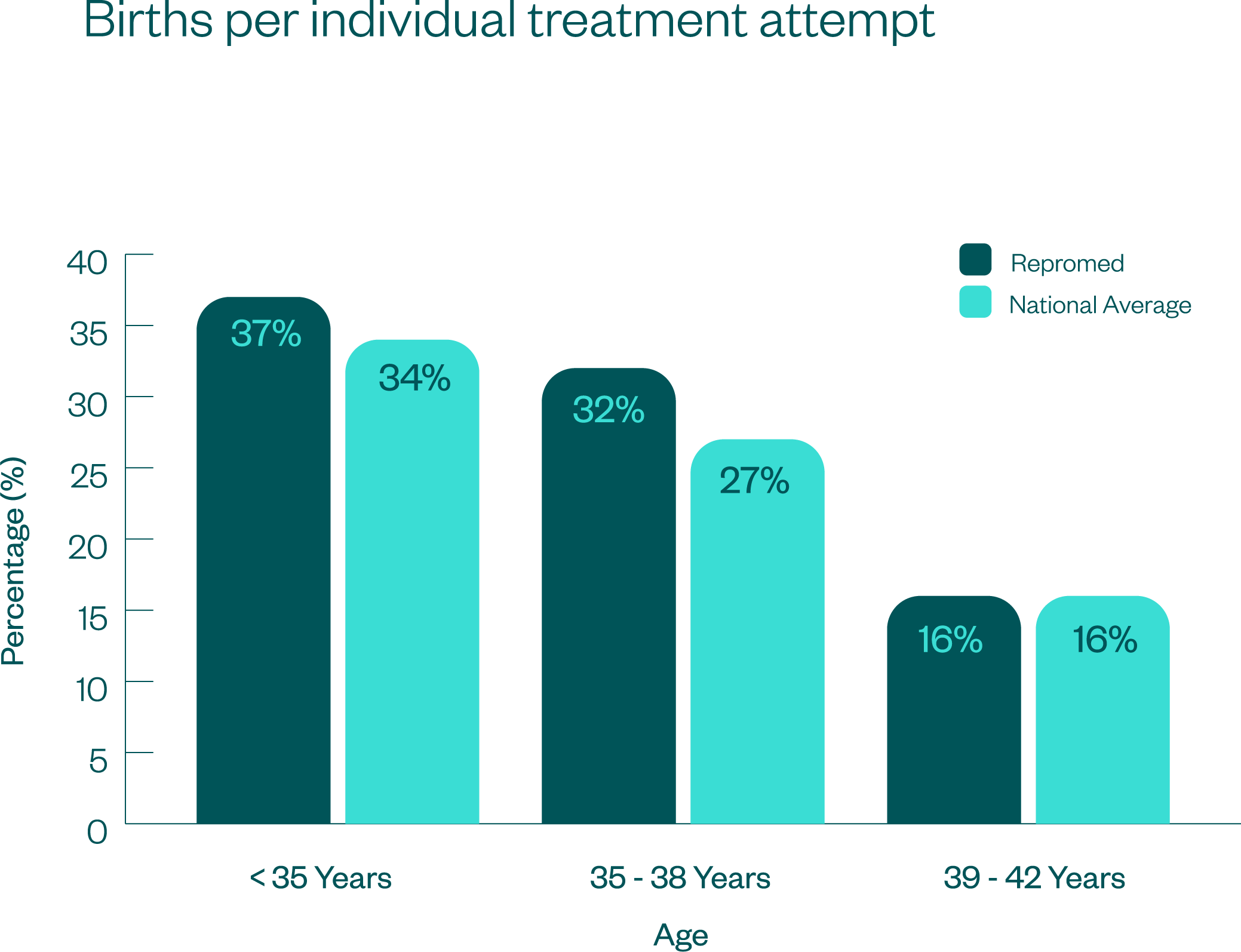
Every year, clinic data is independently audited by the National Perinatal and Epidemiology and Statistics Unit (NPESU) and provided to IVF clinics upon request. The team at Repromed have used this data to create a combined total of the Repromed Adelaide and Repromed Darwin clinics for this measure.
Measure 3 covers total live births from intended embryo transfer cycles initiated in 2022. It only includes patients who use their own eggs. If you are interested in using donated eggs in your cycle, please contact Repromed to better understand your chances of success.
Measure 4 doesn’t look at intended embryo transfer cycles, like the previous measure. Instead, it looks at how many total embryos have been transferred to patients. This is relevant as some clinics will recommend transferring two embryos during each embryo transfer cycle, as it has a higher chance of resulting in a live birth. However, the transfer of two embryos is also known to increase risk to both the baby and mother so these procedures are rarely performed at Repromed. If a clinic performs well in Measure 3 but much worse in Measure 4, they may perform a significant number of dual embryo transfers.
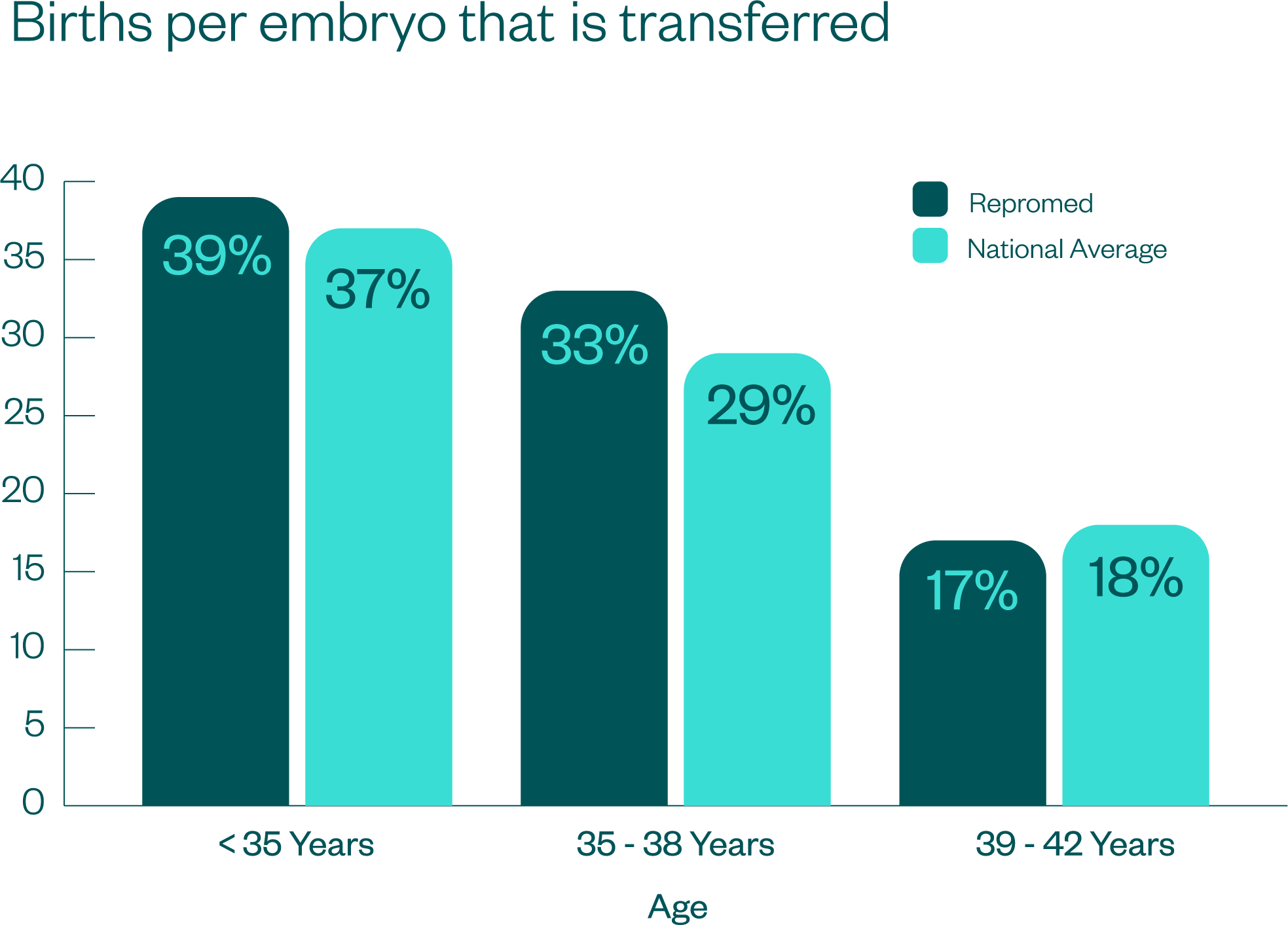
Every year, clinic data is independently audited by the National Perinatal and Epidemiology and Statistics Unit (NPESU) and provided to IVF clinics upon request. The team at Repromed have used this data to create a combined total of the Repromed Adelaide and Repromed Darwin clinics for this measure.
Measure 4 covers live births, divided by the total number of embryos transferred to patients in 2022. It only includes patients who use their own eggs. If you are interested in using donated eggs in your cycle, please contact Repromed to better understand your chances of success.
Lastly, Measure 5 covers the chance of achieving clinical pregnancy for each attempted embryo transfer. This is opposed to the first four measures, which all only consider the chance of achieving a live birth. Since we can measure a pregnancy much earlier than a live birth, this data covers cycles completed in 2023, instead of 2022 or 2021. More recent data like that presented in Measure 5 can be more relevant to you if you’re planning to start a cycle soon.
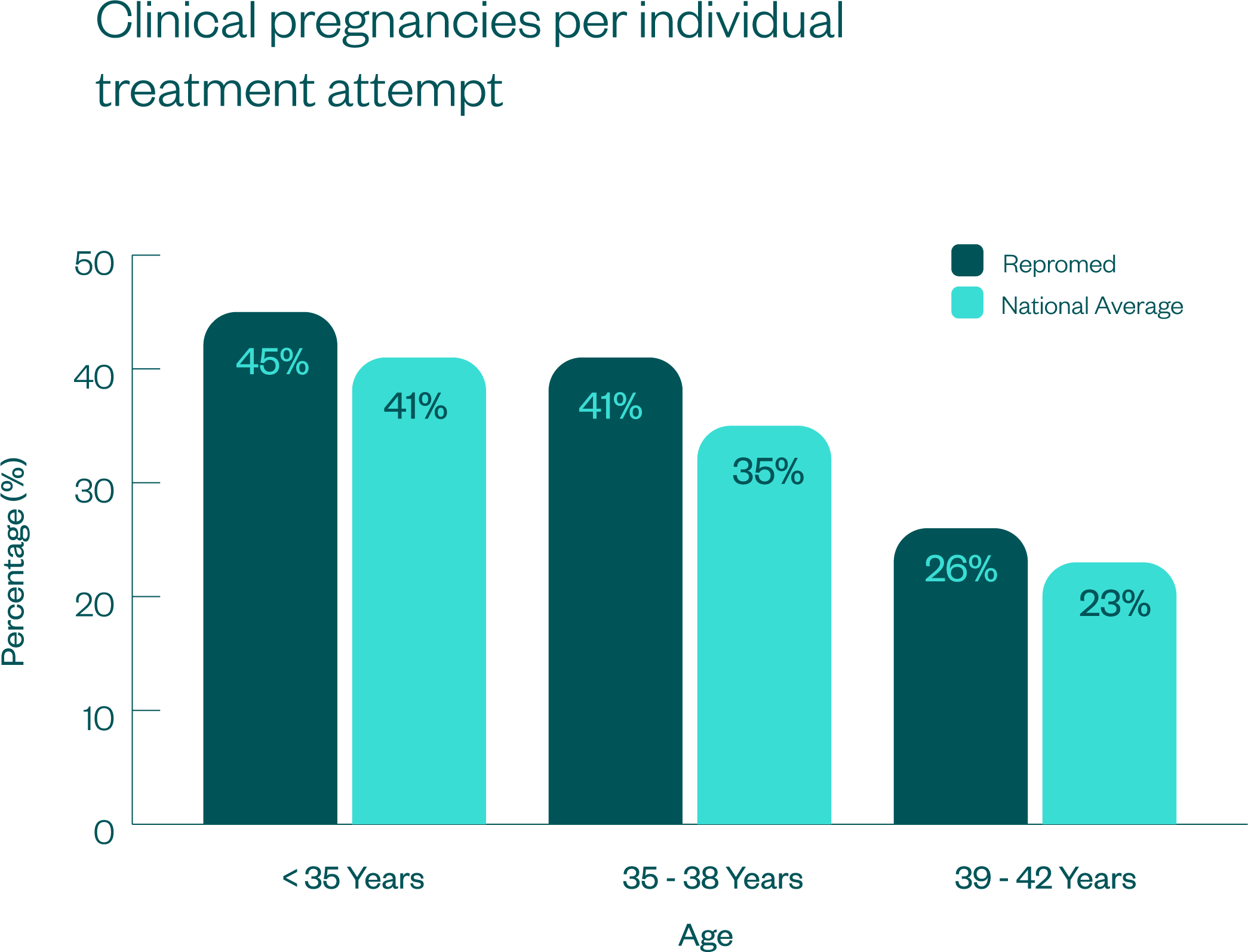
Every year, clinic data is independently audited by the National Perinatal and Epidemiology and Statistics Unit (NPESU) and provided to IVF clinics upon request. The team at Repromed have used this data to create a combined total of the Repromed Adelaide and Repromed Darwin clinics for this measure.
Measure 5 covers clinical pregnancies, divided by the number of attempted embryo transfers in 2023. It only includes patients who use their own eggs. If you are interested in using donated eggs in your cycle, please contact Repromed to better understand your chances of success.
ANZARD Success Rates Results
2022 Clinical Pregnancy and Live Births for Fresh Embryo Transfers
These success rates include data for all Repromed clinics.
The graph shows IVF and ICSI cycles that took place in 2022.
This data excludes cycles completed by patients using donated embryos and donated eggs, but includes cycles completed by patients using donated sperm.
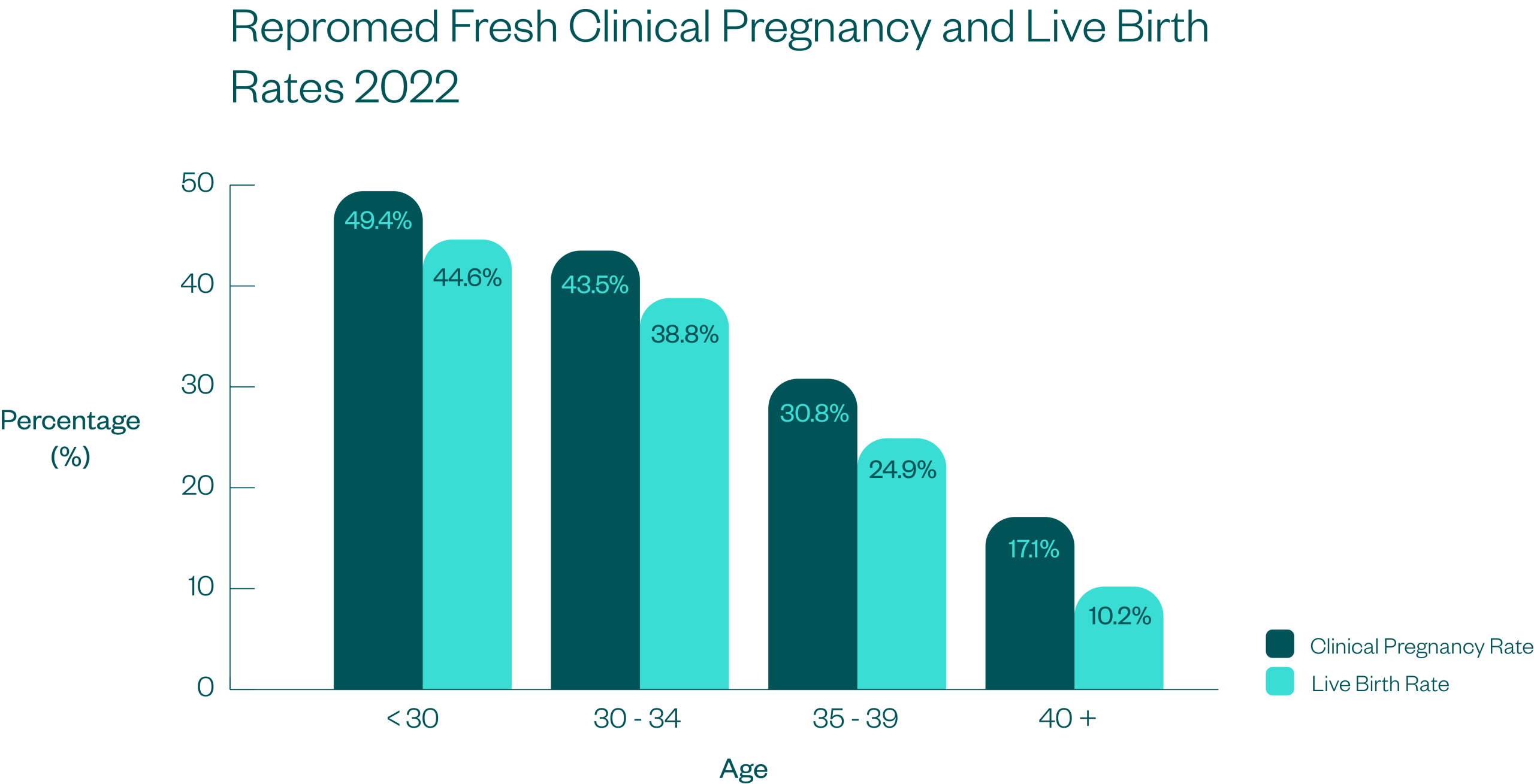
2022 Clinical Pregnancy and Live Births for Frozen Embryo Transfers
These success rates include data for all Repromed clinics.
The graph shows treatments using all frozen embryos created via IVF or ICSI. These cycles took place in 2022.
This data includes treatment cycles that incorporated Pre-Implantation Genetic Testing (PGT). However, it excludes cycles completed by patients using donated embryos and donated eggs, but includes cycles completed by patients using donated sperm.
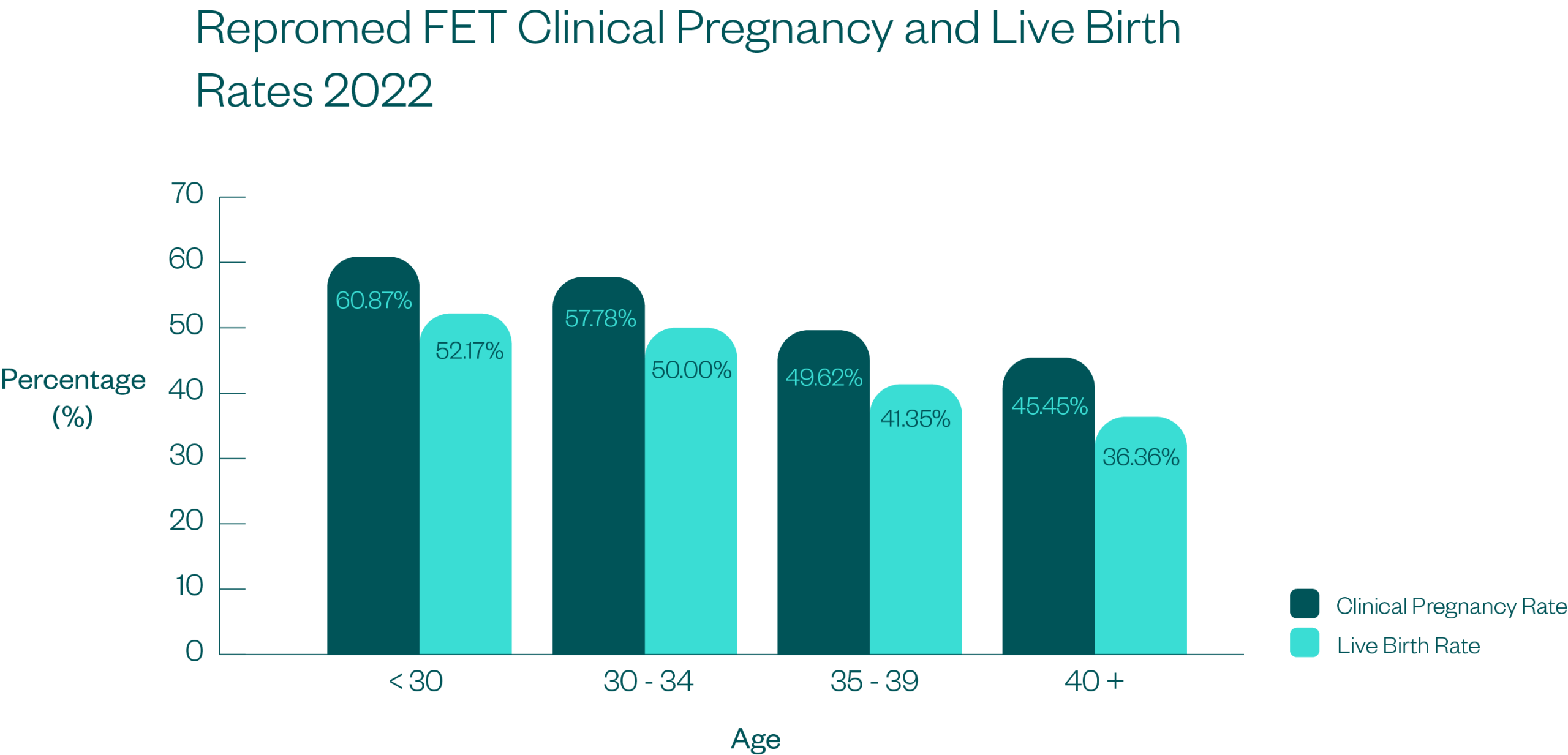
2022 Clinical Pregnancy and Live Births for PGT Frozen Embryo Transfers
These success rates include data for all Repromed clinics.
The graph shows treatments with blastocyst-stage embryos that have undergone Pre-Implantation Genetic Testing (PGT) using trophectoderm biopsy. The <30 and 30-34 age groups have been combined due to the low utilisation of PGT in the <30 age group. These cycles took place in 2022.
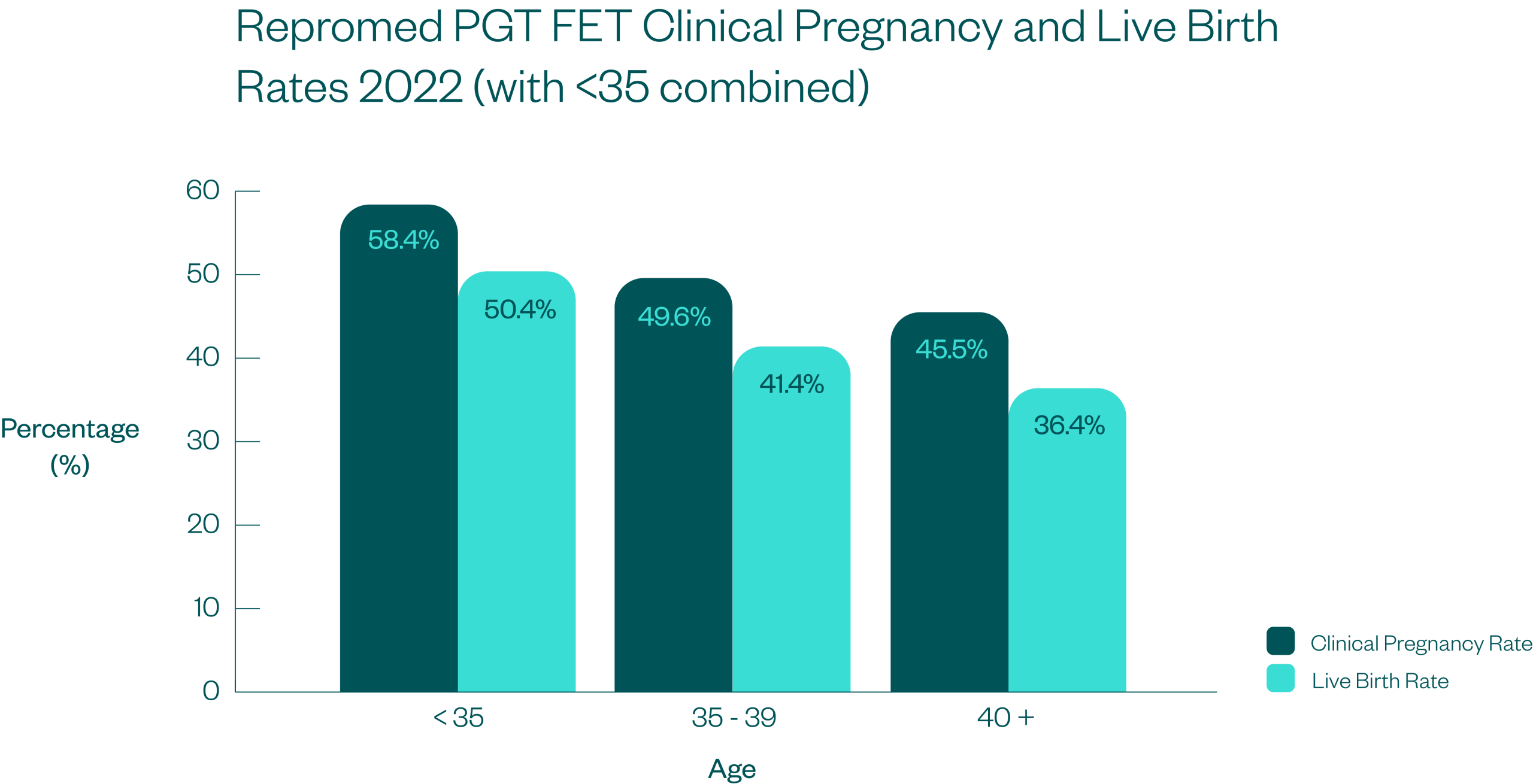
Repromed Clinical Pregnancy and Live Birth Success Rates 2022
The clinical pregnancy rates we include below are per the Australian and New Zealand Assisted Reproductive Database (ANZARD) definition. According to ANZARD, a clinical pregnancy must fulfil one of the following criteria:
- known to be ongoing at 20 weeks;
- evidence by ultrasound detection of an intrauterine sac (with or without a fetal heart);
- examination of products of conception reveal chorionic villi; or
- an ectopic pregnancy has been diagnosed by laparoscope or by ultrasound.
Live Birth Definition
According to the World Health Organisation (WHO) definition, a live birth is defined as the complete expulsion or extraction from its mother of a product of conception irrespective of the duration of the pregnancy, which, after such separation, breathes or shows any other evidence of life, such as beating of the heart, pulsation of the umbilical cord or definite movement of the voluntary muscles, whether or not the umbilical cord has been cut or the placenta is attached; each product of such a birth is considered liveborn.
"*" indicates required fields
"*" indicates required fields